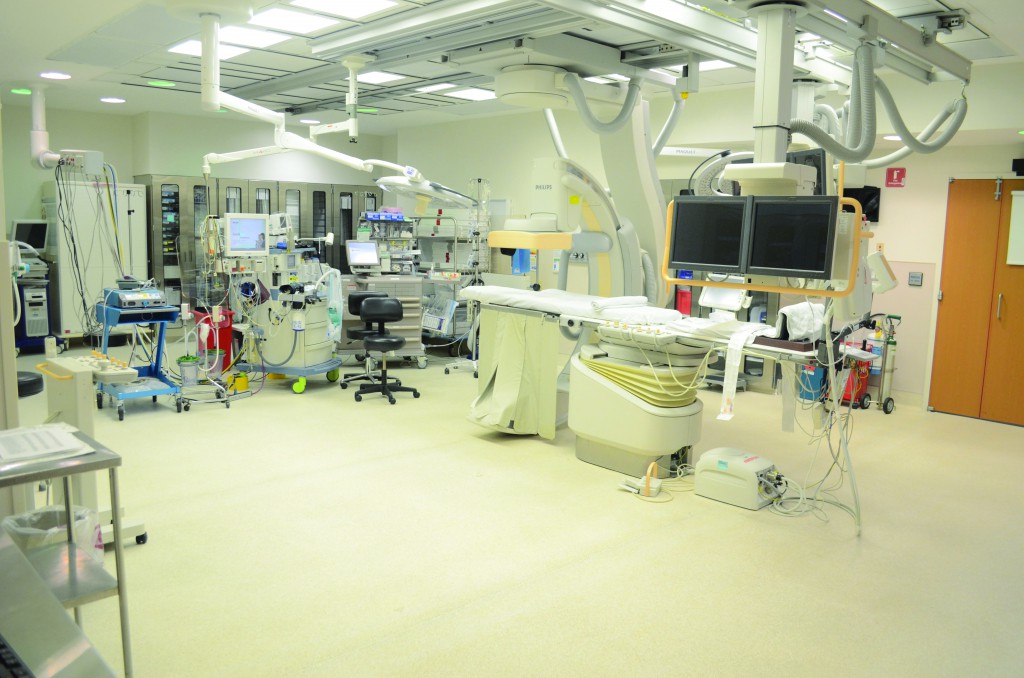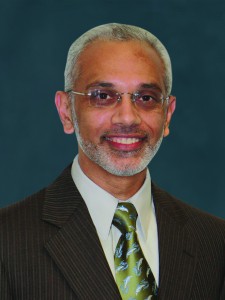Hybrid ORs are proliferating in response to market, surgeon, and even patient demands, but building the business case for this technology can be challenging.
"It's a very expensive proposition," says Lynne Ingle, MHA, BS, RN, CNOR, project manager for Gene Burton & Associates, a healthcare technology consulting company in Franklin, Tennessee, and a former director of surgical services.
Costs can average from $3 million to $6 million, according to data from ECRI Institute and The Advisory Board Company.
With that much money at stake, the natural first question is, "Does our hospital need a hybrid OR?" When answering this question, OR managers should keep in mind that a hybrid OR is a long-term investment; short-term profits are unlikely.
Stay competitive
"I think we're at the point that you need a hybrid OR to be competitive," says Deborah Rideout, BSN, RN, CNOR, director of perioperative services at Southcoast Hospitals Group in New Bedford, Massachusetts. The first hybrid OR in this four-facility system opened in New Bedford in 2008, and another one is being built at their Fall River site. About 230 cases per year on average are performed at the New Bedford site.
Rohit Inamdar, MSc, DABR, senior medical physicist at ECRI Institute, agrees with Rideout. "Even if you are a small facility, minimally invasive surgery is here to stay, so if you don't get on board with a hybrid OR or cath lab, you will be left behind," says Inamdar, who has consulted with many hospitals developing hybrid rooms. "You need a hybrid OR to keep your cardiac surgery program."
Hybrid ORs are most common in academic medical centers, but a growing number are being installed in community hospitals. How can OR managers build a business case that provides a reasonable return on investment? Inamdar says program, staffing, and patients form a three-legged stool that supports the business case for a hybrid OR (sidebar, p 14).
Ensure a robust program
Inamdar recommends that anyone considering a hybrid OR first determine if the facility has a robust open-heart surgery program for valve replacement, given that currently the primary procedures performed in the hybrid OR are transcatheter aortic and mitral valve replacement (TAVR, TMVR).
OR managers should also consider other potential future uses of the hybrid OR. At Inova Fairfax in Falls Church, Virginia, for example, the endovascular hybrid OR began as a location for TAVR, but has since expanded to include endovascular aneurysm repair, says Anne Cochrane, MSN, RN, CNOR, interim director of the cardiovascular OR. "You want to set up the room so it can be used for anticipated future procedures."
Planned future use also affects design and equipment needs. For instance, Ingle says, "Some neurosurgeons want a biplane [angiograph imaging system], but endovascular surgeons use a single plane, and some neurosurgeons are OK with a single plane and don't need a biplane." These decisions will affect costs.
The geographic location of the hybrid room affects the bottom line. "CMS [Centers for Medicare & Medicaid Services] says you have to do TAVR in a hybrid room to receive reimbursement," Inamdar says. CMS lists additional qualifications needed for reimbursement, including volume requirements. Third-party payers are also providing incremental reimbursement for TAVR. In 2014, CMS approved a technology add-on payment to cover TMVR.
To support the hybrid OR, the program must be supported by a good relationship with primary care physicians who will refer patients. "If you have good vascular surgeons but don't have any primary care alliance, you could find yourself with an empty room," Rideout says.

This hybrid OR opened at Southcoast Hospitals Group in New Bedford, Massachusetts, in 2008. (Photo courtesy of Helio Rosa, Southcoast Hospitals Group.)
Get support from experts
"You should have cardiac surgeons who have experience and expertise with TAVR because these patients are considered high risk," Inamdar says.
For hospitals without TAVR experience, CMS requires cardiovascular surgeons to have performed at least 100 career aortic valve replacements (AVRs), including 10 high-risk patients, or at least 25 AVRs in 1 year, or at least 50 AVRs in 2 years, which include at least 20 AVRs in the last year before TAVR initiation. Hospitals may need to recruit cardiovascular surgeons or interventional cardiologists to meet these numbers.
Surgeons need to maintain volume to ensure continued reimbursement. CMS requires the surgeon and hospital to complete at least 20 TAVR procedures in a year, or at least 40 TAVR procedures in 2 years. The agency also has volume requirements for interventional cardiologists and the hospital's cardiac catheterization lab.
In addition to physicians, CMS lists other members who must be part of the team, including echocardiographers, imaging specialists, heart failure specialists, cardiac anesthesiologists, intensivists, nurses, and social workers.
Above all, says Ingle, "The most critical part is having physician champion."
Identify eligible patients
To analyze potential patient volume, Rideout suggests asking, "What is the market share that we aren't getting because we don't have a hybrid OR?" It's helpful to list cases that will be done immediately in the hybrid OR and those that will be added later.
"Look at the length of stay for those patients, and work with your business partners in the organization to calculate what the savings would be if those patients could be discharged sooner," she adds.
Cochrane says the surgeons are good predictors of volume: "They really know their market and where their referral base is."
A limited number of procedures currently require a hybrid OR. "There can be a positive profit margin with TAVR, but it's very small," Inamdar says. Only a small number of patients are eligible for the procedure, and those who are eligible are also high risk. "The national TAVR pool is about 20,000 to 30,000 in the entire US," Inamdar notes.
Reimbursement for the procedure from CMS ranges from $27,000 to $56,000, depending on the patient's severity and how he or she is treated. Considering that the TAVR valve costs just over $30,000 and that the procedure cost ranges from $50,000 to $80,000, it's clear that a hybrid OR "is not a money-making machine," Inamdar says.
"If you're armed with talented physicians who are aligned with you, have a solid cardiovascular program, and a market share that is validated to be leaving the area because you're not offering certain services–that's a good case for a hybrid OR," says Rideout.
Make the numbers work
Because of the expense, it's not easy to make the numbers work for a hybrid OR. "But because it [a hybrid OR] has become a standard, you have to find ways of being fiscally prudent while you're doing it," Rideout says.
One way of saving money is to choose vendors wisely, Ingle says. If, for instance, the cath lab is using equipment from Toshiba, you might be able to obtain a discount by purchasing Toshiba equipment for the hybrid OR.
If your cardiac surgery program isn't large enough for a hybrid OR, Inamdar suggests considering a hybrid cath lab or adding a hybrid interventional radiology suite. The downside is that these rooms still require the staff, supplies, and sterility needed in the OR. "But it's doable and it's a lower price option," he says.
Ingle adds, "My philosophy is that it should be behind the red line of the OR in case you have to open the patient, but I've seen it done both ways. It's something hospitals have to discuss." She notes that remodeling an existing OR is less expensive than building a new one.
To maximize the use of the hybrid OR, Inamdar recommends OR managers work with other physicians such as vascular surgeons, neurosurgeons, and electrophysiologists, who use angiography imaging systems. "You might be able to consolidate so you need fewer labs and improve your financial equation a bit," Inamdar says.
Keep in mind that when not in use for its hybrid capabilities, the OR can be used for certain other cases. At Inova, for instance, "the hybrid OR is built so it can be used for any patient who requires a bypass pump," Cochrane says.
Ingle says that at many hospitals, hybrid ORs are being used for spinal and total joint replacement surgery, as well as other cardiovascular procedures, as physicians increasingly tap into the value of good imaging for a variety of procedures.
Another option for reducing costs is to choose a refurbished angiography imaging system. Facilities that are downsizing or upgrading their systems may be trading in systems that are less than 5 years old.
Inamdar says the typical life span of these systems is 10 years, so facilities could save as much as $1 million by purchasing a refurbished model. "It will still meet your needs but won't have all the bells and whistles," he says. When exploring the refurbished option, be sure to work with a reputable vendor.
Envision the future
Inamdar notes that currently only one mitral valve contouring system is approved for use in the United States, but expects others currently being used in Europe to receive approval as well, further pushing demand for hybrid ORs. "Transcatheter devices are a growth area, and I don't see it slowing down anytime soon," he says. ❖
Cynthia Saver, MS, RN, is president of CLS Development, Inc., Columbia, Maryland, which provides editorial services to healthcare publications.
References
Centers for Medicare & Medicaid. Decision memo for transcatheter aortic valve replacement (TAVR) (CAG-00430N). http://www.cms.gov/medicare-coverage-database/details/nca-decision-memo.aspx?NCAId=257.
The Advisory Board Company. System strategies for hybrid OR investment. http://www.advisory.com/Research/Service-Line-Strategy-Advisor/Original-Inquiry/System-Strategies-for-Hybrid-OR-Investment.
Creating the business plan
Writing a business plan isn't done in isolation, says Deborah Rideout, BSN, RN, CNOR, director of perioperative services at Southcoast Hospitals Group in New Bedford, Massachusetts. "It takes a team to collect the information you need and put it into one packet."
The team should include surgeons and staff from business, finance, engineering, imaging, and biomedical, among others. Typically the plan projects breaking even at 5 years.
"Sales reps can be helpful in identifying break-even points," says Anne Cochrane, MSN, RN, CNOR, interim director of the cardiovascular OR at Inova Fairfax in Falls Church, Virginia.
Elements to consider when writing the plan include:
• Market intelligence. Rideout suggests answering questions like, Who else in the region has a hybrid OR? Where are they drawing the patients from?
• Market share. Estimate what market share the hospital is losing because of not having a hybrid OR and whether the hospital has strong enough referral relationships.
• Patient-related data. This includes payer mix and expected volume, including what percent of current cases will be converted into hybrid cases. Forecast predicted reimbursement based on payer mix and note savings from reduced length of stay.
• Construction. Consider if you can upgrade an existing OR or if you need to create a new one, keeping in mind that a hybrid OR averages 1,100 square feet, compared to 600 square feet for a standard OR.
• Equipment. To avoid missing something, meet with hybrid team members, including surgeons and radiology staff, as well as vendors. Ask vendors for names of hospitals to call, and go on site visits. Use a bidding process to obtain the best price.
• Upgrades. "It's best to plan for software and hardware upgrades on a rolling basis 5 to 10 years out so you have a good idea as to future capital expenses," Cochrane says. "It's not just the expenses up front." The finance department can help with depreciation estimates, and the sales representative would be able to provide upgrade time frames.
• Supplies. The cost of implants such as those used in TAVR are significantly higher than the grafts used in an open procedure, so the plan will need to include expenditures for stock. "Until you are doing the program for about a year, you have to purchase the implants instead of buying on consignment," Cochrane says. She adds that it's key to work with the finance department to ensure supplies are billed; some hospitals have set up a line item for a hybrid procedure.
• Timeline. Lynne Ingle, MHA, BS, RN, CNOR, recommends targeting no more than 6 months for making the decision as to what system to select. "It gives you time to make site visits and get people in agreement, but not so much time that you lose momentum," says Ingle, project manager for Gene Burton & Associates, a healthcare technology consulting company in Franklin, Tennessee, and a former director of surgical services.
Cochrane also recommends working with finance to determine allocation of revenue and supply charges. For example, if a cardiologist and a surgeon are doing a case, who receives credit? Also, block scheduling is necessary for efficient operation of the hybrid OR.
This hybrid OR opened at Southcoast Hospitals Group in New Bedford, Massachusetts, in 2008. (Photo courtesy of Helio Rosa, Southcoast Hospitals Group.)



